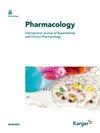中药单体是治疗癌症诱发的心力衰竭的潜在候选药物
IF 2.9
4区 医学
Q2 PHARMACOLOGY & PHARMACY
引用次数: 0
摘要
背景心血管疾病现已成为癌症患者的第二大死因。癌症晚期患者的心脏损伤可导致左心室形态和功能显著恶化。这种特殊的心脏状况被称为癌症诱发的心脏恶病质(CICC),其特点是心脏功能障碍和消瘦。摘要 癌症诱发的心脏恶病质的发生和发展与蛋白质降解、氧化反应和炎症等病理生理过程密切相关。中药单体在逆转心脏损伤方面具有独特优势,而心脏损伤是 CICC 除常规治疗外的终末期表现。本综述概述了 11 种中药单体(即黄芪皂苷Ⅳ、人参皂苷 Rb1、人参皂苷 R1、丹参皂苷、丹参酮Ⅱ A、黄芪多糖、丹参酸、丹参酸 A 和 B 以及银杏内酯 A 和 B)对改善心脏损伤影响的重要发现。这些中药单体是治疗慢性心肌梗死的潜在药物,每种单体都具有特定的机制,有可能逆转与慢性心肌梗死相关的病理过程。本综述总结了 CICC 的病理机制,并探讨了促进抗炎、抗氧化和促进生存的中药单体的药理治疗。它还考虑了中药单体的药物治疗策略,强调了它们作为 CICC 治疗方法的潜力。本文章由计算机程序翻译,如有差异,请以英文原文为准。
Traditional Chinese Medicine Monomers Are Potential Candidate Drugs for Cancer-Induced Cardiac Cachexia.
BACKGROUND
Cardiovascular diseases are now the second leading cause of death among cancer patients. Heart injury in patients with terminal cancer can lead to significant deterioration of left ventricular morphology and function. This specific heart condition is known as cancer-induced cardiac cachexia (CICC) and is characterized by cardiac dysfunction and wasting. However, an effective pharmacological treatment for CICC remains elusive.
SUMMARY
The development and progression of CICC are closely related to pathophysiological processes, such as protein degradation, oxidative responses, and inflammation. Traditional Chinese medicine (TCM) monomers offer unique advantages in reversing heart injury, which is the end-stage manifestation of CICC except the regular treatment. This review outlines significant findings related to the impact of eleven TCM monomers, namely Astragaloside IV, Ginsenosides Rb1, Notoginsenoside R1, Salidroside, Tanshinone II A, Astragalus polysaccharides, Salvianolate, Salvianolic acids A and B, and Ginkgolide A and B, on improving heart injury. These TCM monomers are potential therapeutic agents for CICC, each with specific mechanisms that could potentially reverse the pathological processes associated with CICC. Advanced drug delivery strategies, such as nano-delivery systems and exosome-delivery systems, are discussed as targeted administration options for the therapy of CICC.
KEY MESSAGE
This review summarizes the pathological mechanisms of CICC and explores the pharmacological treatment of TCM monomers that promote anti-inflammation, antioxidation, and pro-survival. It also considers pharmaceutical strategies for administering TCM monomers, highlighting their potential as therapies for CICC.
求助全文
通过发布文献求助,成功后即可免费获取论文全文。
去求助
来源期刊

Pharmacology
医学-药学
CiteScore
5.60
自引率
0.00%
发文量
52
审稿时长
6-12 weeks
期刊介绍:
''Pharmacology'' is an international forum to present and discuss current perspectives in drug research. The journal communicates research in basic and clinical pharmacology and related fields. It covers biochemical pharmacology, molecular pharmacology, immunopharmacology, drug metabolism, pharmacogenetics, analytical toxicology, neuropsychopharmacology, pharmacokinetics and clinical pharmacology. In addition to original papers and short communications of investigative findings and pharmacological profiles the journal contains reviews, comments and perspective notes; research communications of novel therapeutic agents are encouraged.
 求助内容:
求助内容: 应助结果提醒方式:
应助结果提醒方式:


